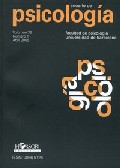Morphological priming involves more than orthographic priming
Abstract
How morphological units are represented and processed has been amatter of concern for models of visual word recognition. A masked priming lexical decision experiment was conducted to examine how far the facilitation effects produced by morphological priming are due to form priming rather than to the morphological representations themselves. Each target word (e.g., NUEVO) was preceded by a morphologically related word (nueva) or by an orthographically related word (nueve). Form overlap was thus maintained constant across conditions. The results showed that morphological priming facilitates target recognition more than form priming. Morphological units seem to have an autonomous level of representation, independent of purely orthographic representations, since they produce different patterns of priming effects. The implications of these results for models of visual word recognition are discussed.Downloads
Published
2007-07-05
Issue
Section
Dossier: Forma y significado en el procesamiento del lenguaje (Coordinador: José Manuel Igoa)
License
The authors who publish in this journal agree to the following terms:
Authors transfer to the publisher all copyright for the full term of protection and for all the world.
The authors can post a copy of their articles in accordance with the policy of free access to the journal.


